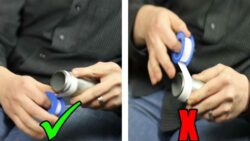Maintaining a spotless and hygienic toilet bowl is essential for every household, but it can often be an intimidating and challenging task. Luckily, with these ten invaluable tips at your disposal, you can effortlessly keep your toilet bowl clean and sparkling at all times. From simple yet effective cleaning techniques to adopting proactive habits, this article will guide you through the most effective ways to maintain a pristine and germ-free toilet bowl, ensuring a clean and sanitary environment for you and your family.
Tip 1: Regular Cleaning Schedule
Maintaining a regular cleaning schedule for your toilet bowl is essential for a clean and hygienic bathroom. To begin, set a specific day and time for cleaning that works best for you. By establishing a routine, you ensure that your toilet bowl is regularly attended to and any potential issues are addressed promptly. Additionally, gather all the necessary cleaning supplies beforehand to make the process more efficient and thorough. Having items such as a toilet brush, gloves, disinfectant cleaner, and paper towels readily available will save you time and effort in the long run.
Tip 2: Use a Toilet Bowl Cleaner
Using a suitable toilet bowl cleaner is crucial for effective cleaning. Choose a cleaner that is specifically designed for toilet bowls, as these are formulated to tackle tough stains and remove grime effectively. It is essential to carefully read and follow the instructions provided by the manufacturer to ensure optimal results. When applying the cleaner, make sure to coat the entire interior of the bowl, including hard-to-reach areas such as under the rim. Allow the cleaner to sit for the recommended time before proceeding to the next step.
Tip 3: Brush Thoroughly
After allowing the cleaner to sit for the recommended time, it’s time to grab a sturdy toilet brush with stiff bristles. The bristles are designed to effectively scrub away any remaining stains or residue. Start by scrubbing all surfaces of the bowl, focusing on areas that have accumulated more grime or are prone to staining. Pay extra attention to the waterline and under the rim, as these areas often harbor bacteria and mineral deposits. A thorough and vigorous scrubbing will ensure a clean and sanitary toilet bowl.
Tip 4: Don’t Forget the Seat and Lid
While cleaning the toilet bowl itself is crucial, it is equally important to clean and disinfect the toilet seat and lid regularly as well. These surfaces come into direct contact with your skin and should be free from bacteria and germs. In addition to wiping them down with a disinfectant cleaner, make sure to remove any stains or discoloration that may have accumulated over time. Don’t overlook the hinges and the underside of the seat and lid, as these can also harbor dirt and grime.
Tip 5: Use Vinegar and Baking Soda
For stubborn stains or mineral deposits in your toilet bowl, vinegar and baking soda can be highly effective natural cleaning agents. Start by creating a paste using baking soda and water, ensuring it has a thick consistency. Apply the paste to the affected areas and let it sit for a few minutes to allow the baking soda to work its magic. Then, use vinegar to tackle mineral deposits by pouring it into the bowl and scrubbing with a toilet brush. The chemical reaction between baking soda and vinegar helps loosen and dissolve stubborn stains.
Tip 6: Prevent Stains and Odors
Prevention is key when it comes to keeping your toilet bowl clean and fresh. One way to do this is by avoiding the use of colored or fragrant toilet bowl cleaners. While they may seem appealing, these products can often leave behind residues and stains. Additionally, remember to flush the toilet after each use to prevent buildup of stagnant water and odors. Consider using toilet bowl tablets or in-tank cleaners, as these can provide continuous cleaning and freshening with every flush, maintaining a hygienic bowl in between regular cleanings.
Tip 7: Deep Clean with Bleach
Periodically deep cleaning your toilet bowl with bleach can be highly effective in removing tough stains and disinfecting the entire bowl. However, it is important to remember safety precautions when using bleach. Wear gloves to protect your skin and ensure proper ventilation in the bathroom by opening windows or turning on an exhaust fan. Dilute bleach with water in a spray bottle and spray the solution onto the bowl, making sure to cover all surfaces. Let the solution sit for a few minutes before scrubbing with a toilet brush, then flush the bowl to rinse away the bleach and residue.
Tip 8: Clean Hard-to-Reach Areas
Toilet bowls have various nooks and crannies that can be challenging to clean. To tackle these hard-to-reach areas, it is recommended to use an old toothbrush or a small brush specifically designed for cleaning toilets. Pay special attention to cleaning the base and corners of the bowl, as these areas tend to accumulate dirt and grime over time. Additionally, don’t forget to clean the flushing mechanism, including the handle and any levers or buttons, as these can also harbor bacteria and germs.
Tip 9: Address Lime Buildup
If you notice lime or mineral deposits in your toilet bowl, using a pumice stone can help remove them effectively. Dampen the stone and gently scrub the affected areas, being cautious not to scrub too hard and damage the porcelain surface. It is important to note that pumice stones should not be used on colored porcelain, as they can cause scratches or discoloration. Regularly addressing and removing lime buildup will not only ensure a clean and aesthetically pleasing toilet bowl but also prevent any potential issues with water flow or clogging.
Tip 10: Maintain a Hygienic Environment
Aside from regular cleaning and maintenance of the toilet bowl itself, it is essential to maintain a hygienic environment in the entire bathroom. Regularly disinfecting the toilet area, including the floor, walls, and other surfaces, is crucial for preventing the spread of bacteria and germs. Furthermore, keeping the bathroom well-ventilated by opening windows or using an exhaust fan helps minimize moisture and prevent the growth of mold and mildew. Lastly, encourage proper hand hygiene among household members and guests to minimize bacterial growth and maintain a clean and healthy bathroom environment.





